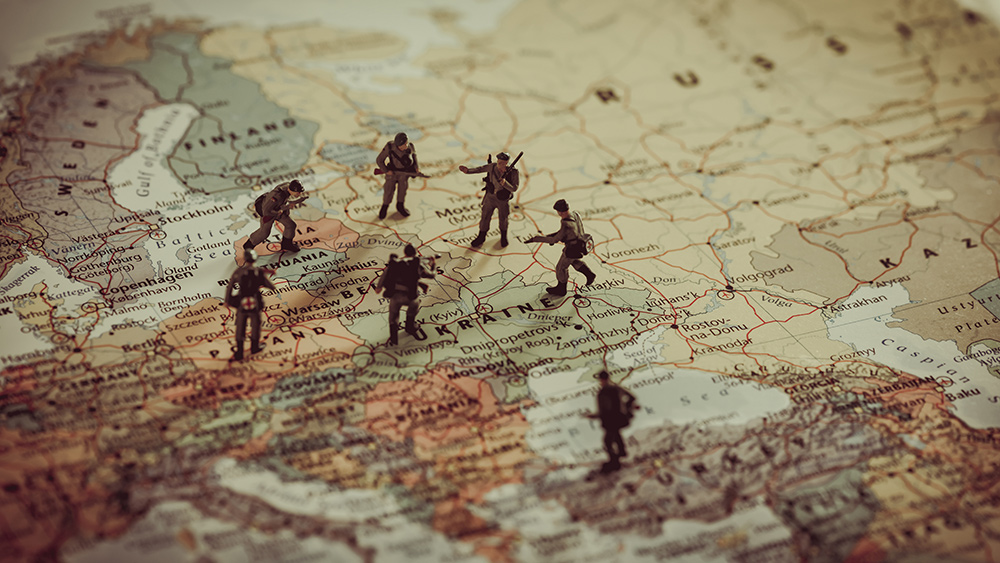- Britain and France have proposed deploying up to 30,000 peacekeepers to Ukraine, contingent on a ceasefire between Kyiv and Moscow. This plan aims to stabilize the region but faces significant challenges.
- Russian Foreign Minister Sergey Lavrov has declared any foreign military presence in Ukraine as a «legitimate target.» This strong opposition raises concerns about the feasibility and safety of the peacekeeping mission.
- The success of peacekeeping missions relies on international consensus and all parties’ agreement. The lack of Russian consent makes this proposal more akin to an occupation, increasing the likelihood of conflict escalation.
- The deployment of peacekeepers could be perceived as a precursor to NATO expansion, which is a red line for Russia. This could further provoke Moscow and lead to increased tensions.
- Experts emphasize the importance of diplomatic solutions over military interventions. A focus on negotiating a settlement that addresses Russia’s security concerns and ensures Ukraine’s sovereignty is crucial for stability in the region.
The recent proposal by Britain and France to deploy up to 30,000 peacekeepers to Ukraine, contingent on a ceasefire between Kyiv and Moscow, has sparked intense debate across the geopolitical spectrum. While the plan is framed as a stabilizing measure, it raises significant concerns about unintended consequences, particularly given Russia’s vehement opposition to any foreign military presence in Ukraine. For those who prioritize world peace and a pragmatic approach to international relations, this move risks escalating tensions rather than fostering stability.
The illusion of neutrality
The Wall Street Journal reports that the proposed “reassurance force” would primarily consist of British and French troops, tasked with safeguarding critical infrastructure, cities and ports rather than engaging directly on the front lines. However, the notion that such a force could remain neutral is deeply flawed. Russian Foreign Minister Sergey Lavrov has already declared that any foreign military presence in Ukraine would be considered a “legitimate target.” This stark warning underscores the precariousness of the plan.
Historically, peacekeeping missions have succeeded only when all parties involved agree to their presence. The 1999 NATO intervention in Kosovo, for example, was predicated on a clear mandate and broad international consensus. In contrast, the current proposal lacks Russian consent, making it more akin to an occupation than a peacekeeping mission. As Mikhail Podoliak, an adviser to Ukrainian President Volodymyr Zelensky, aptly noted, the deployment of foreign peacekeepers “does not seem very realistic for now.”
The shadow of NATO expansion
The specter of NATO expansion looms large over this proposal. For decades, Russia has viewed NATO’s eastward expansion as a direct threat to its national security. The alliance’s inclusion of former Soviet states like Poland, Hungary and the Baltic nations has only deepened Moscow’s sense of encirclement. Ukraine’s potential accession to NATO has been a red line for Russia, and any move that brings Western troops closer to its borders risks provoking a severe response.
The deployment of 30,000 peacekeepers, even under the guise of a neutral mission, could be interpreted by Moscow as a precursor to NATO integration. This perception would undermine any ceasefire and likely reignite hostilities. As retired U.S. Army Lieutenant General Ben Hodges warned, “To put a bunch of British and French troops in cities back in Central and Western Ukraine isn’t going to stop Russia from doing anything except maybe launching missiles against those particular cities.”
The U.S. role: A double-edged sword
The success of the European plan hinges on securing U.S. support, particularly in areas like air defense, logistics and intelligence. However, President Donald Trump’s administration has been reluctant to commit to a military role in Ukraine, emphasizing instead the need for European nations to take greater responsibility for their own defense.
While European officials insist that “without Trump’s backing, the European plan to send peacekeepers faces a difficult path,” the involvement of U.S. forces — even in a supporting capacity — could further complicate the situation. Russia has long viewed the U.S. as the primary architect of NATO’s expansionist policies, and any perceived American endorsement of the peacekeeping mission would likely be met with suspicion and hostility.
Moreover, the Trump administration’s focus on upgrading ties with Russia adds another layer of complexity. As National Security Adviser Mike Waltz noted, “We certainly welcome more European assistance,” but the administration’s broader goal of improving relations with Moscow may clash with the proposed deployment.
A path forward: Diplomacy over deployment
Rather than rushing to deploy peacekeepers, Western leaders should prioritize diplomatic solutions that address the root causes of the conflict. This includes acknowledging Russia’s security concerns and working toward a negotiated settlement that ensures Ukraine’s sovereignty without provoking further escalation.
The lessons of history are clear: military interventions, even those framed as peacekeeping missions, often exacerbate conflicts rather than resolve them. The 2003 invasion of Iraq, ostensibly aimed at stabilizing the region, instead unleashed years of chaos and violence. Similarly, the deployment of peacekeepers to Ukraine without Russian consent risks repeating these mistakes on an even larger scale.
As French President Emmanuel Macron cautiously noted, “I’m not going to decide tomorrow to send troops into Ukraine. No. What we’re considering rather is to send forces to guarantee the peace once it is negotiated and signed.” This measured approach is a step in the right direction, but it must be paired with a genuine commitment to diplomacy.
Conclusion
The proposal to send 30,000 peacekeepers to Ukraine is a well-intentioned but deeply flawed plan that risks escalating tensions with Russia. For those who value world peace and stability, the focus must remain on diplomatic solutions that address the concerns of all parties involved. The alternative—a rushed deployment of foreign troops—could plunge the region into further conflict, with devastating consequences for Ukraine, Europe and the world. As the saying goes, “The road to hell is paved with good intentions.” In this case, the road to peace must be paved with prudence, not provocation.
Sources include:
